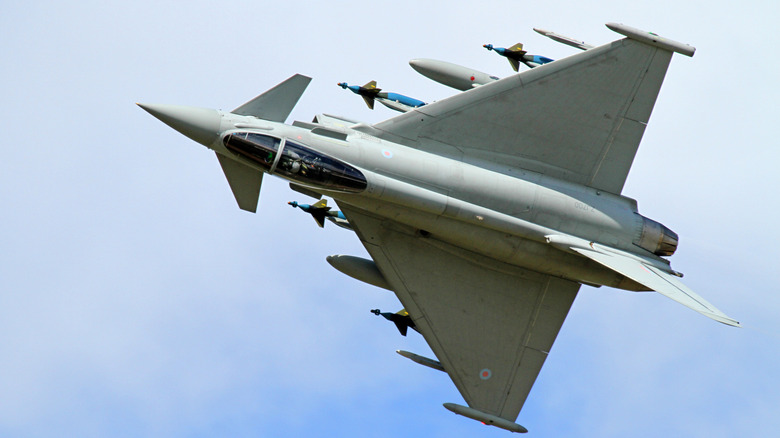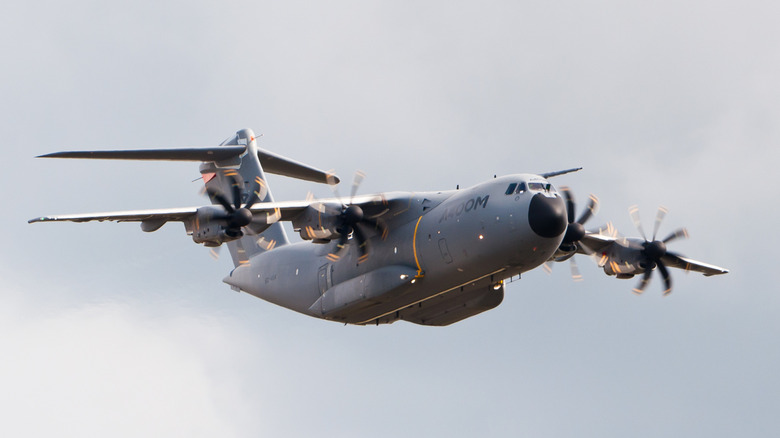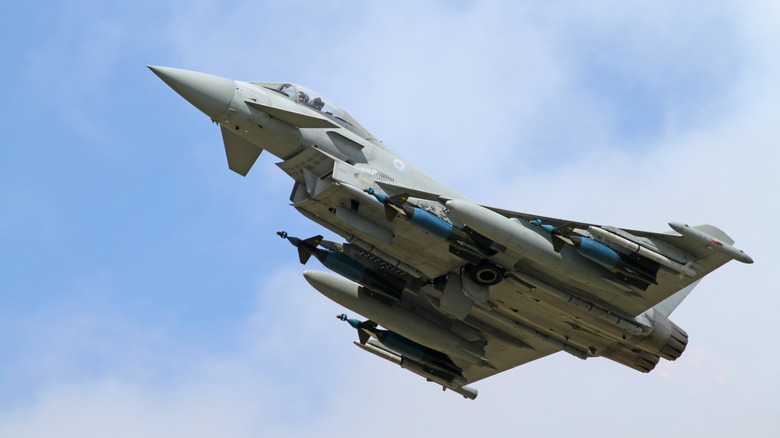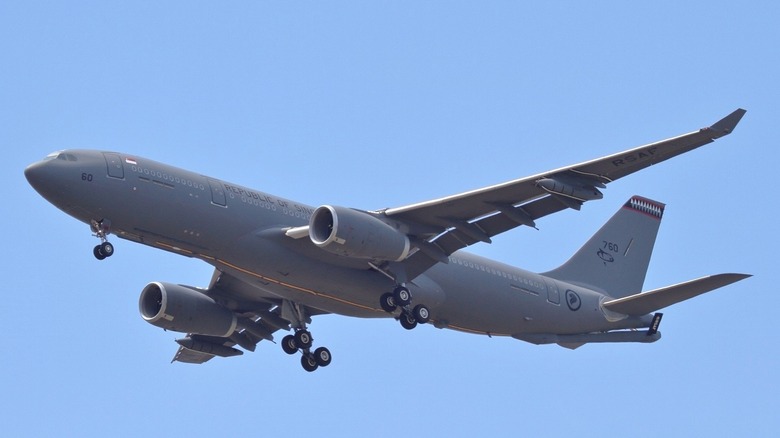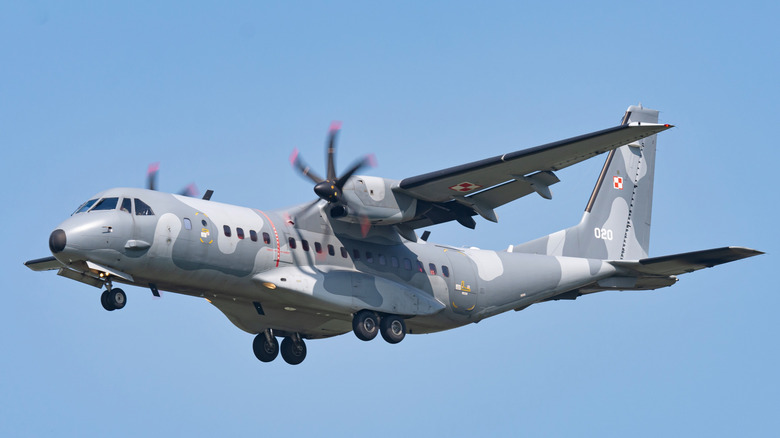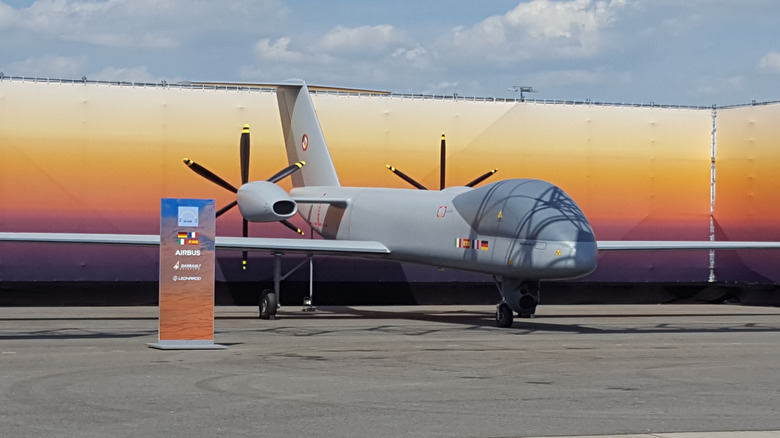5 Military Aircraft Manufactured By Airbus
Airbus is known for building civilian aircraft such as the Airbus A380, the largest passenger aircraft in history. Yet, the company also has a robust military division that builds transport, refueling, and combat aircraft in both fixed-wing and helicopter form. Airbus also offers its military customers training for flight and ground crews, live fire training, support engineering, and numerous other services.
Airbus is a multinational conglomerate that grew from a consortium of smaller European aircraft producers into a worldwide manufacturer with 20 plants in countries around the globe. Its defence manufacturing arm even has facilities in the United States. The Lakota helicopters used by the U.S. Army are manufactured by Airbus in the U.S.A. The company operates in California, Virginia, Texas, Alabama, Colorado, and Florida. According to its website, Airbus U.S. is one of the world's top ten defense manufacturers.
In 2024, aircraft built by Airbus participated in a historic exercise called Pacific Skies. Airbus cargo planes, refueling tankers, and fighter jets from the French, German, and Spanish air forces traveled through the Indo-Pacific region, conducting maneuvers in Alaska, Hawaii, Japan, Australia, and India. The exercise helped participating nations to improve coordination with allies, including the United States.
Airbus A400M Atlas
The Airbus A400M heavy tactical airlift plane can transport outsized loads such as armored vehicles, land on short runways, and travel up to 3,400 nautical miles fully loaded. It's even capable of air-to-air refueling, both as a tanker and as the receiver. It can ferry as many as 116 paratroopers to the battlefield. It's one of a handful of military planes with four engines, but unlike most of them, it's powered by turboprop engines instead of jet engines, much like one of its chief rivals, the American-built C-130 Hercules.
It was designed in the 1980s to compete with the C-130 and similar planes like the Transall C-160. Airbus aimed to give it greater range and cargo capacity than the Hercules, and the resulting plane can carry up to 37 metric tons or 81,600 pounds at Mach 0.72 for up to 4,800 nautical miles — greater than smaller, medium-capacity airlifters. Turboprops were chosen over jet engines for better protection against Foreign Object Damage (FOD) on unpaved runways. It's highly maneuverable, with a bank angle of 120 degrees and steep climb and descent angles.
It's capable of sustained low-level flight at altitudes as low as 150 feet. Other features include an armored cockpit, chaff and flare countermeasures, a low infrared signature, and damage-resistant, fly-by-wire controls. The A400M's development was delayed, and its first flight didn't take place until 2009, but once it was available for sale, this robust transport aircraft was ordered by numerous European countries, in addition to Malaysia and Turkey.
Eurofighter Typhoon
The Eurofighter Typhoon is a swing-role combat jet that prioritizes maneuverability. It's built by a consortium that includes Airbus, along with BAE Systems and Leonardo. It was designed and built across four countries, including Germany, the United Kingdom, Italy, and Spain, making it a true multinational fighter jet that helped to boost political and industrial ties across Europe. The Eurofighter Typhoon's top speed is a stunning Mach 2.0, with a flight ceiling of 55,000 feet.
As a swing-role or multi-role fighter, the Typhoon is a versatile jet that can perform multiple mission profiles on a single flight. It can function as an air superiority fighter, fending off enemy jets with air-to-air missiles, and then fire a stand-off weapon like the Storm Shadow missile at a distant ground target. It can then turn around and perform a low-level strafing attack in a close air support role. Remarkably, it can do all this without landing to switch weaponry for each mission, as long as it was properly equipped on the ground.
The Typhoon is a fourth-generation fighter, meaning it lacks the true stealth capabilities of fifth-generation jets like the American-built Lockheed Martin F-35 Lightning II. There are also questions about the jet's future, as a decline in orders may lead to an eventual shutdown of the German factory that assembles it. Nevertheless, 680 Eurofighter Typhoons have been ordered by air forces across Europe as well as several Middle Eastern countries, making it one of Europe's most successful fighter jets.
Airbus A330 MRTT
The A330 MRTT, which a NATO document defines as the Multi-Role Tanker Transport, is a refueling tanker that has been ordered by at least 15 countries. Five of those countries — Luxembourg, the Netherlands, Norway, Germany, Belgium, and the Czech Republic — have pooled their resources to establish the Multinational MRTT Fleet (MMF) in which NATO owns the aircraft but available to the participating nations. The goal is to reduce reliance on American refueling tanker capabilities.
The A330 MRTT offers longer range and increased fuel offloading capabilities compared to older tanker aircraft. However, as its name implies, it's more than just an air-to-air refueling tanker. It can also carry up to 300 passengers while transporting pallets of cargo in its hold. Plus, as an aeromedical evacuation plane, it can be configured for up to 40 stretchers and 100 passengers, plus the medical crew to attend to them.
The A330 MRTT can offload up to 70 metric tons or 154,000 pounds of fuel while loitering over a distance of 1,250 nautical miles, with an overall range of 8,700 nautical miles. In addition, it can carry 45 metric tons (99,000 pounds) of payload. The A330 MRTT is combat-proven, having fueled more than 20 types of combat aircraft since 2014. In 2024, Airbus announced a new version called the A330 MRTT+, which offers a longer range and improved fuel efficiency.
Airbus C295
The C295 is a versatile medium tactical aircraft that can carry out multiple missions, including troop transport, maritime patrol, and many more. It was originally built by Spain's CASA, which is now part of Airbus. In addition to its transport and patrol duties, it can carry out roles as diverse as airborne warning, signals intelligence, airborne firefighting, and even close air support on the battlefield.
The C295's twin Pratt & Whitney Canada PW127G turboprops offer both fuel efficiency and excellent range, with up to 13 hours of endurance with optional in-flight refueling. The aircraft can perform short takeoffs and landings from unpaved airstrips. It can cruise fully laden at 260 knots at 30,000 feet with a fully pressurized cabin. The C295 carries 70 troops or up to eight metric tons (17,600 pounds) of cargo.
The C295 has served in tough environments ranging from Iraq and Afghanistan to Colombia and Brazil. The combat-proven plane features defensive measures such as chaff and flare dispensers, as well as an armored cockpit. Its systems have been proven in combat zones, but it has also performed missions as varied as disaster relief and drug interdiction. In 2024, Airbus announced an agreement with Tata to perform final assembly of C295s in Gujarat, India.
Eurodrone
The Eurodrone is one of several uncrewed aerial systems (UASs) being developed or co-developed by Airbus. This particular drone, like the Eurofighter Typhoon, is a collaboration between multiple countries, including Germany, France, Italy, and Spain. Airbus Defence and Space of Germany is the prime contractor for the program. The goal is to build a remotely piloted aircraft system (RPAS) with a greater combination of payload and endurance than any other RPAS.
The Eurodrone is categorized as a medium-altitude, long-endurance (MALE) drone aircraft. It is intended to perform reconnaissance, intelligence gathering, and armed strike missions. To support that last category, the Eurodrone features underwing payloads for attaching missiles. Future models may be capable of anti-submarine warfare missions and other maritime patrol capabilities. Dual engines give it survivability, while line of sight (LOS) and beyond line of sight (BLOS) data links provide users with full situational awareness and control, as well as delivering complete sovereignty over the system.
The Eurodrone is still in the design stage as a result of delays in the program. First flight is currently expected to take place in 2027. Despite the delay, numerous countries are interested in acquiring the Eurodrone, including India and Japan.
